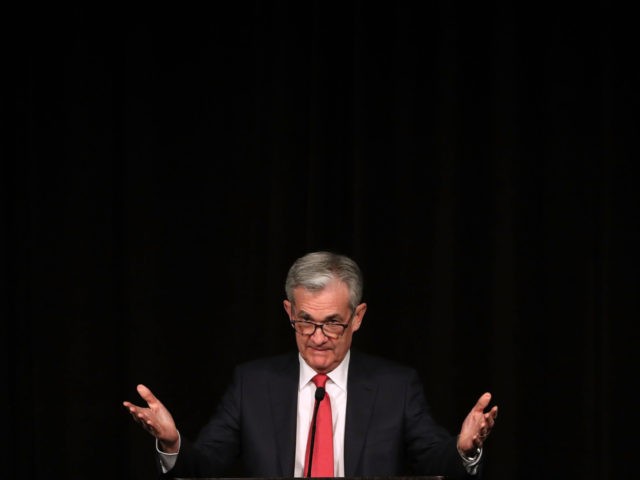The Federal Reserve raised its benchmark interest rate target to a range of 0.25 to 0.50 percent on Wednesday, the first hike since 2018.
The move was widely expected after several Fed officials indicated that the Fed would hike its target at the conclusion of the March meeting at the Federal Open Market Committee.
“Inflation remains elevated, reflecting supply and demand imbalances related to the pandemic, higher energy prices, and broader price pressures,” the FOMC said in a statement.
Projections released by the Fed on Monday showed that Fed officials expect to raise rates by a quarter of a point at each of the Fed’s six remaining meetings this year, bringing the target to around 1.9 percent. That is up a full percentage point from the projections released in December.
The march projections also show officials expect inflation to be running at 4.3 percent by the end of the year, up from 2.6 percent expected in December. Core inflation, which excludes food and energy prices, is expected to rise 4.1 percent, up from 2.7 percent expected at the end of last year.
The projections also show that Fed officials expect its interest rate target will rise to 2.8 percent by the end of next year and stay that high in the following year, above the expected long-run rate of 2.4 percent. That is an indication that Fed officials think interest rates will have to remain high in order to overcome the inflationary pressures that have gripped the economy since early 2021.
This is a stark shift in the expectations of Fed officials. At the December meeting, the median view of Fed officials was for the target to be 0.9 percent at year end. rising to 1.6 percent next year, and 2.1 percent the year after that, all below the long-run estimate of 2.5 percent.
The median projection for inflation next year climbed to 2.7 percent from 2.3 percent in December. The projection for 2024’s inflation rose to 2.3 percent from 2.1 percent. The longer-run projection remains steady at two percent.
The Fed indicated that although it was no longer expanding its balance sheet by purchasing bonds, it has not yet begun to shrink its balance sheet by not replacing bonds as they mature. The Fed said it expects to begin reducing its holdings of Treasuries and mortgage-backed securities at a coming meeting.
James Bullard, the president of the St. Louis Fed, voted against the Fed’s action on Wednesday, saying he would have preferred a bigger rise in the Fed’s target.

COMMENTS
Please let us know if you're having issues with commenting.